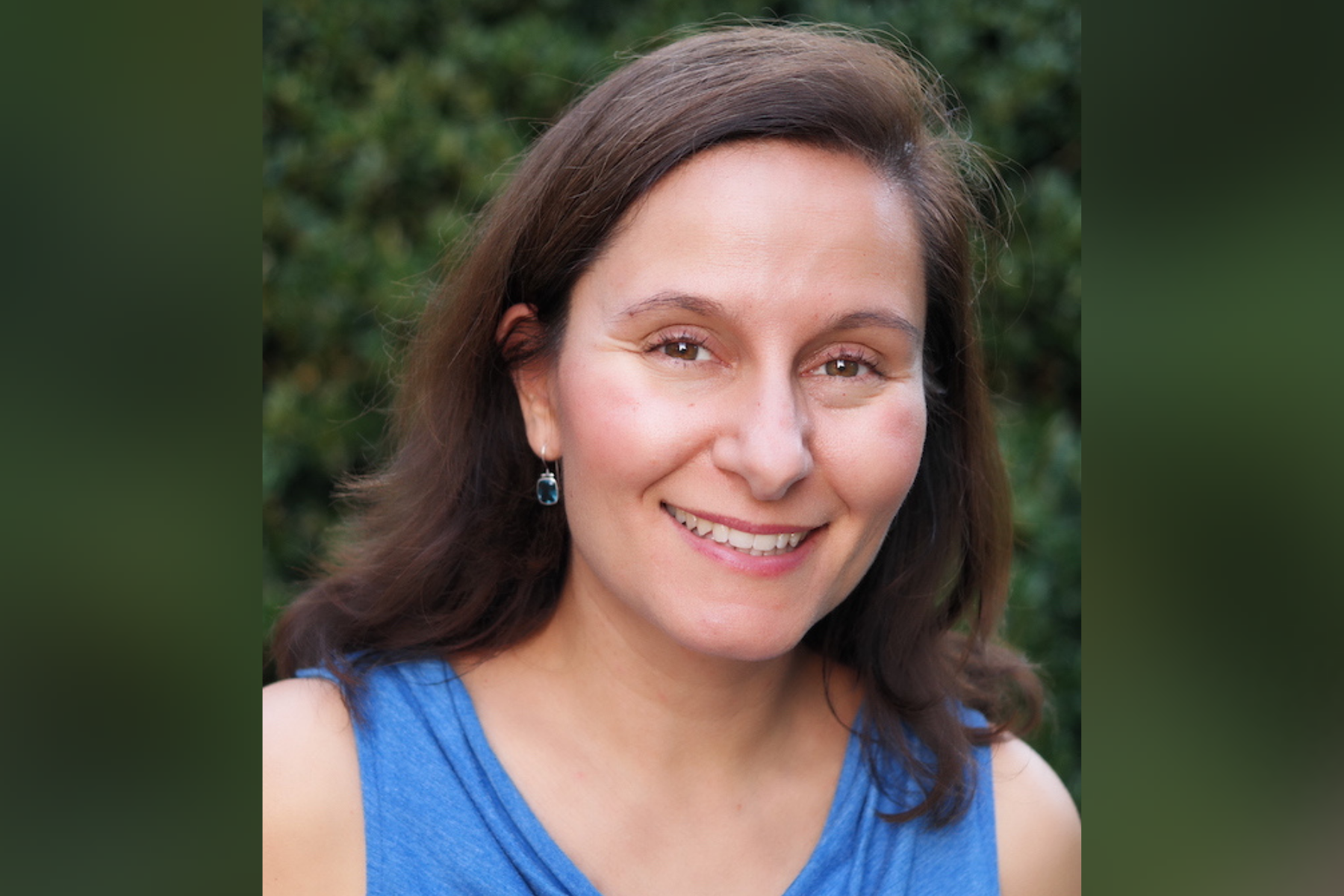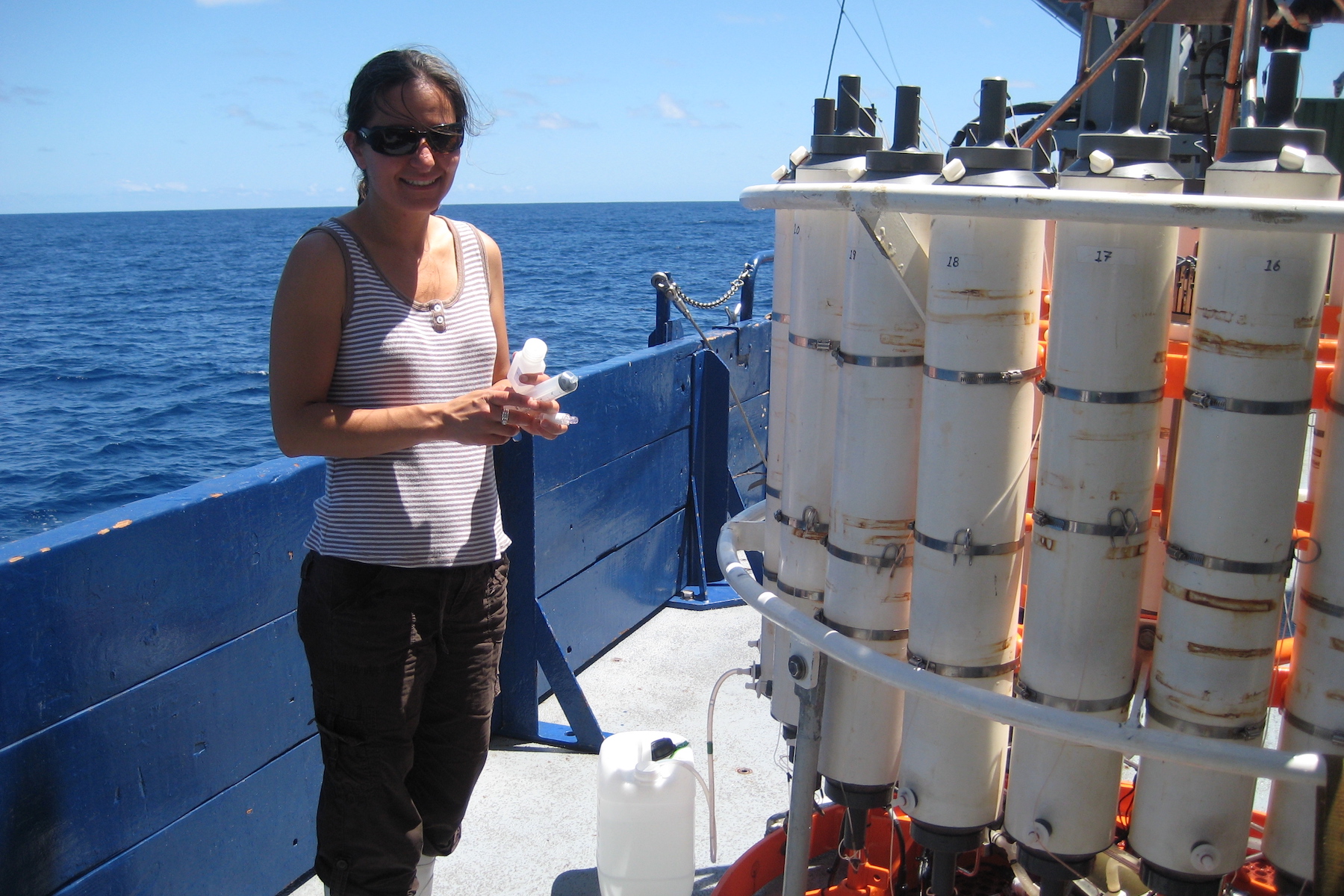Faculty Spotlight: Angie Knapp

Angie Knapp is an associate professor of oceanography and environmental science in the Department of Earth, Ocean and Atmospheric Science, part of Florida State University’s College of Arts and Sciences. Knapp earned her bachelor’s degree in biology-geology from Whitman College in Walla Walla, Washington, in 1999. She earned both her master’s and doctoral degrees in geoscience from Princeton University in 2002 and 2006, respectively. Knapp’s research focuses on the marine nitrogen cycle on a range of temporal and spatial scales.
Tell us a little about your background and what brought you to FSU.
My interest in oceanography started because I wanted to understand what controlled Earth’s climate. I learned that the ocean plays a key role regulating atmospheric carbon dioxide concentrations through both biological and abiological processes. Given my broad interest in climate, I was excited to join the EOAS department at FSU because it includes oceanographers, geologists, meteorologists and environmental scientists, all of which contribute essential knowledge to our understanding of Earth’s climate. I have great opportunities to collaborate and learn from my colleagues.
Can you break down your areas of interest for us?
My research is focused on understanding the role that nutrients play in regulating the biological mechanism that influences atmospheric carbon dioxide concentrations, what oceanographers call the “biological pump,” or simply put, plant growth in the ocean. An overarching theme of my research is identifying and quantifying the nutrients that support phytoplankton, or single-celled plants, that grow in the ocean, especially in regions that have low concentrations of inorganic nutrients that are the “first choice” of most phytoplankton. I use geochemical tools to identify and quantify these nutrients, but my work is interdisciplinary, and I collaborate with many biologists.
Recently, my work has also highlighted the role of geology, including volcanoes and submarine groundwater discharge, in modifying ocean chemistry and phytoplankton species composition. My work records the influence of geological and biological processes that leave behind unique geochemical signatures in the ocean.
Tell us about your publication “Kīlauea lava fuels phytoplankton bloom in the North Pacific Ocean.”
This paper, published in the journal Science in 2019, highlights the different impacts that geology, and specifically, volcanism, can have on the ocean. When Kilauea erupted in 2018, oceanographers at the University of Hawaii noticed a phytoplankton bloom in remote sensing images several days after the lava entered the ocean. My colleagues at UH went to sea, collected samples, and found relatively high concentrations of nitrate in surface waters, which is uncommon for the area. They sent me samples to measure the isotopic composition of the nitrate to identify where it came from. With other geochemical data, we learned that the lava flowed down the slope of the island to a water depth of 300 meters, where the heat from the lava caused upwelling, bringing relatively nutrient rich water to the surface ocean, which lead to a diatom bloom.
What do you want the public to know about your research? Why are your topics important?
Phytoplankton growth in the ocean regulates atmospheric carbon dioxide concentrations. Phytoplankton are also the base of the marine food web. Thus, understanding the sources and sinks of the nutrients that limit phytoplankton growth is important for understanding both why atmospheric carbon dioxide concentrations may change over time as well as understanding why marine animals, like fish and whales, may thrive in a region. My work uses geochemical tools to identify the regions and processes that add and remove nitrogen to and from the ocean.
Are there any projects or goals you’re working on?
I’m really excited about a new National Science Foundation project that has been funded to study nutrient cycling on the West Florida Shelf in the Gulf of Mexico. I am the lead principal investigator on this $2.3 million collaborative project with colleagues at the University of South Florida, Old Dominion University and Oregon State University, as well as the U.S. Geological Survey in St. Petersburg, Florida. Together, we are looking at the role of nitrogen and iron coming out of submarine discharge on the West Florida Shelf and whether these nutrients support nitrogen fixation on the shelf. We have seen unique geochemical signatures on the shelf not seen elsewhere else in the global ocean. Not only do we want to understand the origins of these geochemical signatures, but we also want to understand whether the nutrients coming out of submarine groundwater discharge make it into the deeper Gulf of Mexico, and ultimately to the Atlantic Ocean, fertilizing phytoplankton along the way.
What is something unexpected you’ve learned through studying the ocean?
A recent and surprising finding is that nitrogen from the Mississippi River doesn’t appear to make it off the shelf and into the deep Gulf of Mexico. This is based on undergraduate Sammie Howe’s recent work, “The dual isotopic composition of nitrate in the Gulf of Mexico and Florida Straits” published in the Journal of Geophysical Research-Oceans in 2020, which she did for her honors thesis in my lab. We think most of the nitrate from the Mississippi River is consumed by phytoplankton on the continental shelf, and that any nitrate that escapes consumption by phytoplankton on the shelf is rapidly “whisked” out of the Gulf by the Loop Current, a fast-moving current that brings water quickly into and out of the Gulf to and from the Atlantic Ocean. The fast ocean circulation prevents any nitrate from the Mississippi River from accumulating to meaningful levels in the Gulf itself. While we were surprised not to see Mississippi River nitrate in the Gulf, this result is consistent with recent modeling work.
What experience has been the highlight of your career so far?
I love being at sea — it's a lot of work, but it’s also a beautiful and unique experience being out in the middle of the ocean and pulling up water from several miles below the sea surface. I feel fortunate to have the opportunity to collect ocean water and bring it back to the lab, analyze it, and then try to interpret what its geochemistry means.
Who are your role models? Who has influenced you most in your life?
I attended Whitman College and was fortunate to have professors who valued and excelled at teaching. I worked closely with several geology faculty members (there were no oceanographers) and did two research projects my senior year. Their passion for science and ability to communicate left a big impression on me, and it influences my teaching. I love teaching, and it makes me a better scientist.
If your students only learned one thing from you (of course, hopefully they learn much more than that), what would you hope it to be?
I would hope students learn that the ocean plays a central role regulating Earth’s climate. After that, I hope they appreciate that nitrogen is the best element, and that Trichodesmium is the best phytoplankton!


